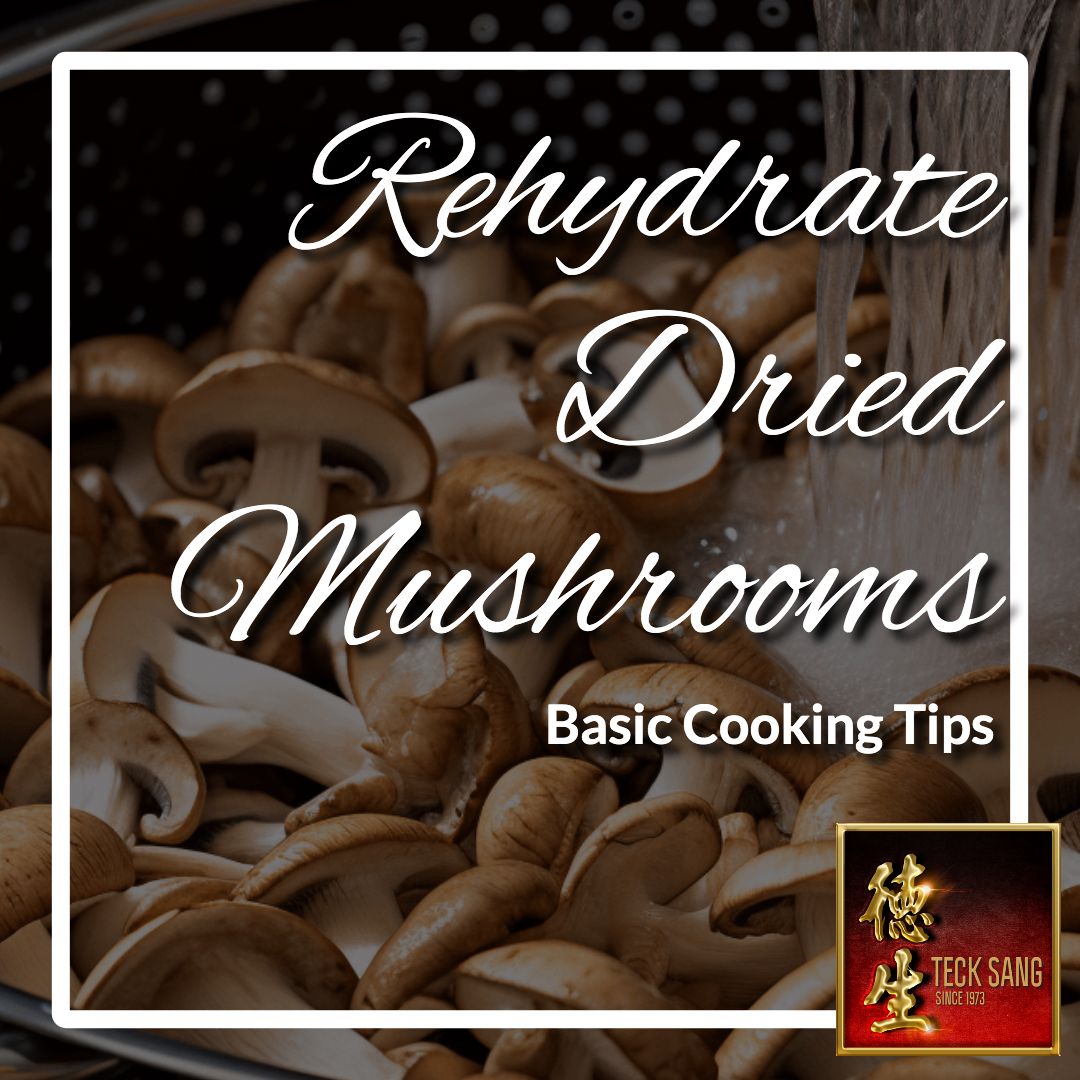Rehydrating Dried Mushrooms: A Simple Guide

Looking to add a burst of flavor to your culinary creations? Rehydrating dried mushrooms is an essential technique that will elevate your dishes to new heights.
In this simple guide, we will show you step-by-step how to revive these delectable fungi. From choosing the right mushrooms to enhancing their flavor, we've got you covered.
Get ready to impress your guests with perfectly rehydrated mushrooms that will take your cooking to the next level. Let's dive in!
Key Takeaways
- Rehydration enhances the flavor and texture of dried mushrooms.
- Choosing the right mushrooms is important for successful rehydration.
- Follow a step-by-step guide to properly rehydrate dried mushrooms.
- Drain and rinse rehydrated mushrooms to enhance their cleanliness and taste.
Benefits of Rehydrating Dried Mushrooms
You should definitely rehydrate dried mushrooms because they become plump and flavorful when soaked in water. Rehydration is a crucial step in preparing these dehydrated fungi for cooking.
Dried mushrooms have a concentrated flavor and a unique texture that can be enhanced by rehydration. Soaking them in water allows them to absorb moisture and regain their original size and texture. This process also helps to reawaken their taste, making them more aromatic and delicious.
Choosing the Right Mushrooms for Rehydration
Make sure to carefully select the mushrooms you want to rehydrate in order to achieve the best results in terms of flavor and texture. When choosing mushrooms for rehydration, it's important to consider their quality and suitability for the dish you plan to prepare.
Firstly, examine the appearance of the dried mushrooms. They should have a vibrant color and be free from any signs of discoloration or mold. Avoid mushrooms that appear dull or have an unpleasant odor, as these could indicate spoilage.
Secondly, consider the type of mushroom. Different varieties have unique flavors and textures when rehydrated. For a robust and earthy flavor, porcini mushrooms are a popular choice. Shiitake mushrooms offer a rich and meaty taste, while oyster mushrooms provide a delicate and slightly sweet flavor.
Lastly, take into account the recipe you're preparing. Some dishes may call for specific mushroom varieties to complement the overall flavor profile. Consider the texture and size of the mushrooms as well, as this can affect the final outcome of your dish.
By carefully selecting the mushrooms for rehydration, you can enhance the flavors and textures of your culinary creations. Remember to store them properly after rehydration to maintain their freshness.
Enjoy the delicious results of your efforts!
Step-by-Step Guide to Rehydrating Dried Mushrooms
To rehydrate dried mushrooms, simply place them in a bowl of hot water and let them soak for 20 minutes, or until they become plump and soft. This process restores the mushrooms' original texture and flavor, making them suitable for various culinary applications.
When selecting dried mushrooms, opt for ones that are whole and intact, as they tend to rehydrate more efficiently. It's important to discard any mushrooms that have an off smell or appear moldy.
After soaking, gently squeeze out any excess water from the mushrooms before use. The rehydrated mushrooms can be added to soups, stews, stir-fries, or even used as a topping for pizza or pasta dishes.
Remember, the key to successfully rehydrating dried mushrooms lies in patience and ensuring they're fully plump and soft before incorporating them into your recipes.
Enjoy the rich, earthy flavors that rehydrated mushrooms bring to your dishes!
Tips for Achieving Perfectly Rehydrated Mushrooms
For perfectly rehydrated mushrooms, ensure that they're fully submerged in hot water and gently stir them occasionally to evenly distribute the moisture.
This simple step-by-step guide will help you achieve the best results when rehydrating dried mushrooms.
- Start by selecting high-quality dried mushrooms with no signs of mold or damage.
- Place the mushrooms in a heatproof bowl and cover them with hot water. Make sure the water is hot, but not boiling, as boiling water can result in overcooked mushrooms.
- Let the mushrooms soak for about 20 to 30 minutes, or until they become plump and tender.
- Gently stir the mushrooms every few minutes to ensure even rehydration.
- Once the mushrooms are fully rehydrated, drain them and pat them dry before using them in your favorite recipes.
Enjoy the rich, earthy flavor of perfectly rehydrated mushrooms in your dishes!
How to Properly Drain and Rinse Rehydrated Mushrooms
After rehydrating the mushrooms, use a colander to drain and rinse them under cold water. This step is crucial to remove any remaining dirt or debris from the mushrooms and ensure a clean and fresh taste.
To properly drain and rinse rehydrated mushrooms, follow these simple steps:
- Place the colander in the sink and transfer the rehydrated mushrooms into it.
- Gently shake the colander to remove excess water from the mushrooms.
- Rinse the mushrooms under cold running water, making sure to thoroughly wash all the surfaces.
By properly draining and rinsing the mushrooms, you not only improve their overall cleanliness but also enhance their flavor and texture. This step is essential in providing your guests with a delightful culinary experience.
Enhancing the Flavor of Rehydrated Mushrooms: Bonus Tips
Sprinkle a pinch of salt and a dash of garlic powder onto your rehydrated mushrooms to elevate their flavor and add a savory kick. These simple additions can make a world of difference in your culinary creations.
Salt enhances the natural flavors of the mushrooms, while garlic powder adds a subtle yet robust taste. The combination of the two creates a mouth-watering umami flavor that will leave your taste buds wanting more.
When adding the salt and garlic powder, be sure to evenly distribute them over the mushrooms to ensure every bite is bursting with flavor. Remember, the key is to enhance, not overpower, the natural taste of the mushrooms. So, go ahead and experiment with different amounts until you find the perfect balance.
Your guests will be impressed by the delicious depth of flavor you've achieved. Enjoy!
Frequently Asked Questions
How Long Can I Store Rehydrated Mushrooms in the Refrigerator Before They Go Bad?
Rehydrated mushrooms can be stored in the refrigerator for up to 5 days before they go bad. Make sure to keep them in an airtight container to maintain freshness and prevent spoilage.
Can I Rehydrate Mushrooms With Hot Water Instead of Room Temperature Water?
Yes, you can rehydrate mushrooms with hot water instead of room temperature water. Hot water will speed up the rehydration process, allowing you to enjoy your mushrooms in less time.
Are There Any Mushrooms That Should Not Be Rehydrated?
There are certain mushrooms that should not be rehydrated, as they may become toxic or unpleasantly slimy. It is important to research each specific mushroom variety and follow proper guidelines for rehydration.
Can I Use the Liquid From Rehydrating Mushrooms as a Broth or Stock?
Yes, you can use the liquid from rehydrating mushrooms as a flavorful broth or stock. It adds a rich umami taste to your dishes and can be a great way to enhance the flavor of soups, sauces, and stews.
Are There Any Health Risks Associated With Rehydrating Dried Mushrooms?
There are potential health risks associated with rehydrating dried mushrooms. It is important to properly wash and prepare them to avoid contamination or ingestion of harmful bacteria or toxins.
Conclusion
Rehydrating dried mushrooms is a simple yet rewarding process that enhances their flavor and texture. By following the step-by-step guide and considering the tips provided, you can achieve perfectly rehydrated mushrooms every time.
The process of draining and rinsing the mushrooms ensures their cleanliness and removes any excess moisture.
With these techniques, you can elevate the taste of your dishes and enjoy the deliciousness of rehydrated mushrooms.


